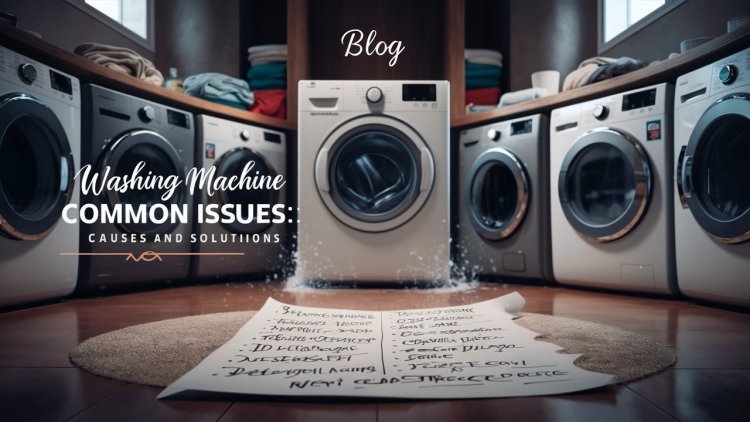Washing Machine Common Issues: Causes and Solutions
Struggling with washing machine issues? Discover the common causes and easy solutions to get your machine running smoothly again.

Washing machines are indispensable for modern households, simplifying the chore of cleaning laundry. However, like all appliances, they can develop problems over time. Below, we delve into some common washing machine issues, their causes, and solutions to help you troubleshoot effectively.
1. Washing Machine Not Draining
Overview:
One of the most frustrating issues is when the washing machine completes a cycle but leaves water behind in the drum.
Possible Causes:
- Clogged Drain Pump or Filter: Debris such as lint, coins, or fabric can block the pump or filter.
- Kinked or Blocked Drain Hose: A twisted or obstructed hose can restrict water flow.
- Faulty Drain Pump: If the pump is damaged, it won’t be able to remove water effectively.
- Electrical Malfunction: Problems with the control board or wiring can interrupt the draining mechanism.
Solutions:
- Check and clean the drain pump and filter to remove any blockages.
- Inspect the drain hose for kinks or clogs and straighten or clean it as needed.
- Test the drain pump for functionality and replace it if it’s faulty.
- Consult a technician if the issue involves electrical components.
2. Washing Machine Electrical Issues
Overview:
Washing Machine electrical issues can cause the washing machine to stop mid-cycle, fail to start, or behave erratically.
Possible Causes:
- Faulty Power Cord or Outlet: A damaged cord or malfunctioning outlet can prevent the machine from receiving power.
- Control Panel Problems: Loose connections or defective buttons can disrupt operations.
- Blown Fuse or Circuit Breaker: Overloaded circuits can trip breakers or blow fuses, cutting power.
- Motor Issues: A malfunctioning motor can cause the machine to stop functioning properly.
Solutions:
- Ensure the power cord and outlet are in good condition and securely connected.
- Check the control panel for loose wires or defects and tighten or replace components as needed.
- Reset the circuit breaker or replace blown fuses to restore power.
- Consult a professional to inspect and repair motor-related issues.
3. Washing Machine Belt Issues
Overview:
The drive belt in a washing machine is critical for spinning the drum. A damaged or loose belt can lead to poor performance or no spinning at all.
Possible Causes:
- Worn-Out Belt: Over time, belts can stretch, fray, or snap, affecting drum movement.
- Loose Tension: Improper tension can cause the belt to slip or fail to engage with the pulleys.
- Misaligned Belt: If the belt is not aligned correctly, it won’t operate effectively.
Solutions:
- Inspect the belt for signs of wear or damage and replace it if necessary.
- Adjust the belt tension to ensure proper engagement with the pulleys.
- Realign the belt on the pulleys if it has shifted out of place.
Final Thoughts
Maintaining your washing machine through regular checks and timely repairs can help prevent these common issues and extend the lifespan of your appliance. Proper care of components such as the drain pump, electrical connections, and drive belt ensures optimal performance.
For expert assistance with washing machine problems, CLT Appliance Repairs offers professional services to diagnose and fix issues efficiently. Whether it’s draining, electrical faults, or belt replacements, their team ensures your washing machine runs smoothly again.
What's Your Reaction?















